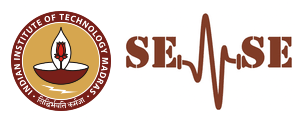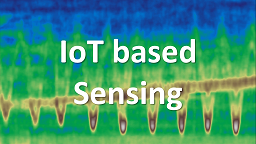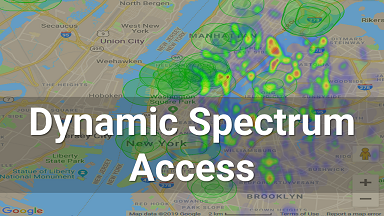
Our research explores system-level design of next-generation intelligent wireless systems and advanced sensing technologies, spanning both algorithm design as well as system prototyping. A key area of our work involves creating intelligent sensing platforms that integrate diverse sensor modalities to address complex real-world challenges. Our approach bridges the gap between theoretical innovation and robust system prototyping, driving advancements in connected and context-aware environments.

Aerial Networks. Our research focuses on leveraging UAVs to create lightweight, flexible, and portable wireless networks that can be deployed quickly and efficiently to provide a wide range of "on-demand" services. These networks are particularly valuable in environments where existing infrastructure is absent, damaged, or insufficient, offering immediate and scalable solutions. UAV networks hold immense promise in disaster relief efforts, enabling first responders to establish communication and support in critical situations.
Aerial Edge. We focus on utilizing UAVs for on-demand mobile sensing tasks such as 3D mapping, surveillance, intrusion detection, and real-time monitoring. These UAVs often operate in areas with little to no wireless network coverage, such as disaster zones or remote forests, making real-time data streaming to edge servers unreliable. To address this, we design lightweight deep learning models optimized for local processing on UAVs, enabling accurate sensing while efficiently utilizing their limited computational resources.

Advanced Sensing. We specialize in RF-based sensing technologies-such as RFID, WiFi, ultrawideband, and millimeter waves-that effectively complement traditional line-of-sight modalities like cameras. By integrating these sensing techniques with mobile platforms such as robots and drones, we develop scalable, efficient solutions (location tracking, robotic applications, smart home) capable of operating in challenging environments, including emergency scenarios.
Hardware Acclerated Sensing. A significant aspect of our work involves tackling the computational demands of advanced signal processing and deep learning, often necessary for such embedded systems. We focus on optimizing these solutions to be lightweight and practical for resource-constrained IoT and edge devices. This includes leveraging techniques like hardware acceleration to make our systems energy efficient, low-cost and ready for real-world deployments.

Wireless Coverage. We conduct research in wireless coverage estimation to support the efficient deployment of modern wireless networks, particularly at higher frequencies such as 5G and mmWave. Our work focuses on addressing the unique challenges of indoor environments, where demand for high-throughput applications (e.g., AR/VR) is greatest. Since exhaustive or site-specific measurements are often impractical, we develop innovative data-driven techniques to estimate coverage efficiently and reliably - for instance, using modern tools like Federated Learning.
Spectrum Usage. Spectrum databases track available RF spectrum, but inaccuracies often lead to inefficient usage. To improve this, we enhance these databases with real-time spectrum measurements. To make spectrum sensing scalable and widely accessible, we are developing advanced algorithms that enable smarter, more efficient data collection, such as optimal wardriving strategies.